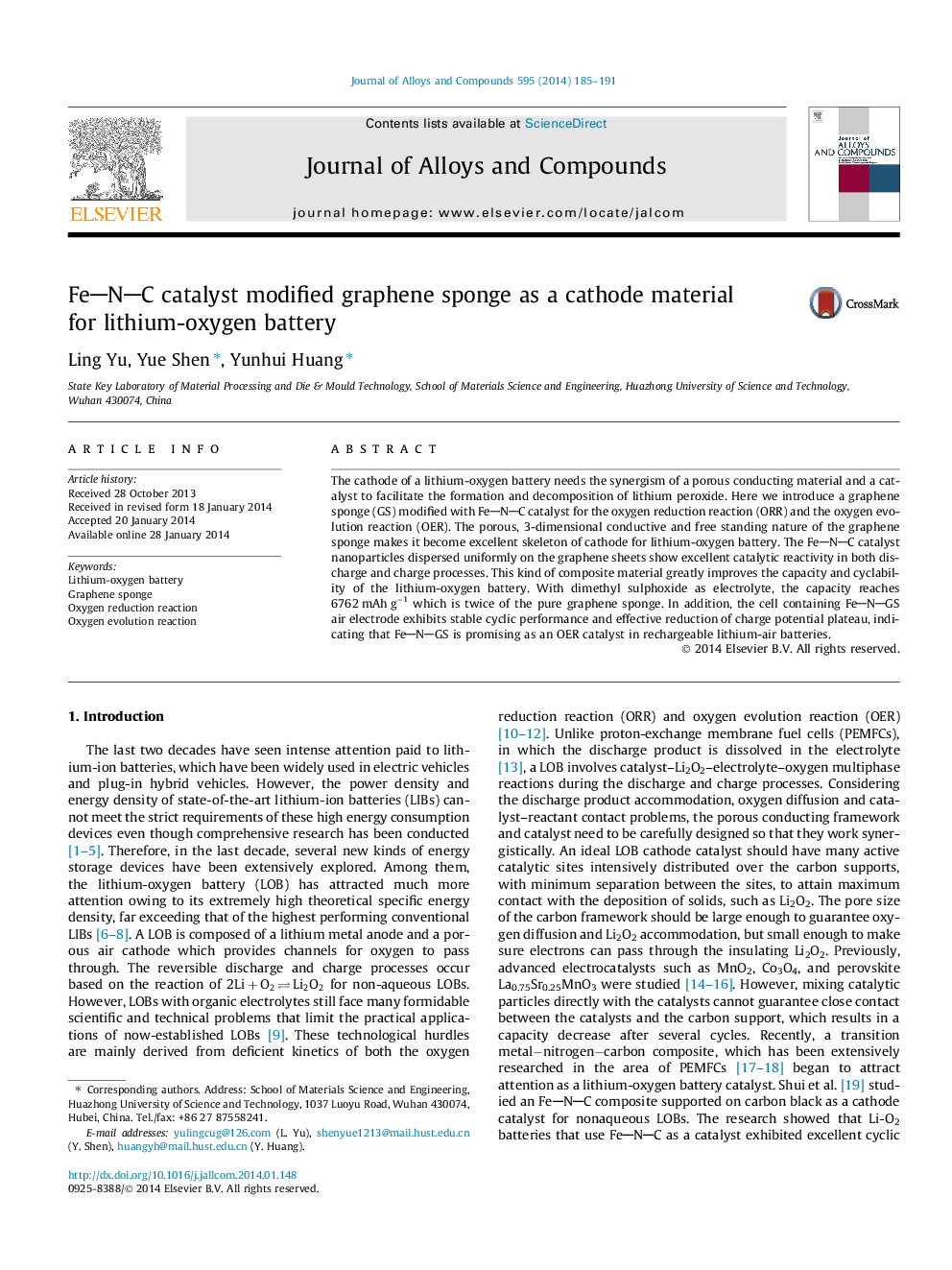| Article ID | Journal | Published Year | Pages | File Type |
|---|---|---|---|---|
| 1611712 | Journal of Alloys and Compounds | 2014 | 7 Pages |
Abstract
The cathode of a lithium-oxygen battery needs the synergism of a porous conducting material and a catalyst to facilitate the formation and decomposition of lithium peroxide. Here we introduce a graphene sponge (GS) modified with FeNC catalyst for the oxygen reduction reaction (ORR) and the oxygen evolution reaction (OER). The porous, 3-dimensional conductive and free standing nature of the graphene sponge makes it become excellent skeleton of cathode for lithium-oxygen battery. The FeNC catalyst nanoparticles dispersed uniformly on the graphene sheets show excellent catalytic reactivity in both discharge and charge processes. This kind of composite material greatly improves the capacity and cyclability of the lithium-oxygen battery. With dimethyl sulphoxide as electrolyte, the capacity reaches 6762 mAh gâ1 which is twice of the pure graphene sponge. In addition, the cell containing FeNGS air electrode exhibits stable cyclic performance and effective reduction of charge potential plateau, indicating that FeNGS is promising as an OER catalyst in rechargeable lithium-air batteries.
Related Topics
Physical Sciences and Engineering
Materials Science
Metals and Alloys
Authors
Ling Yu, Yue Shen, Yunhui Huang,
